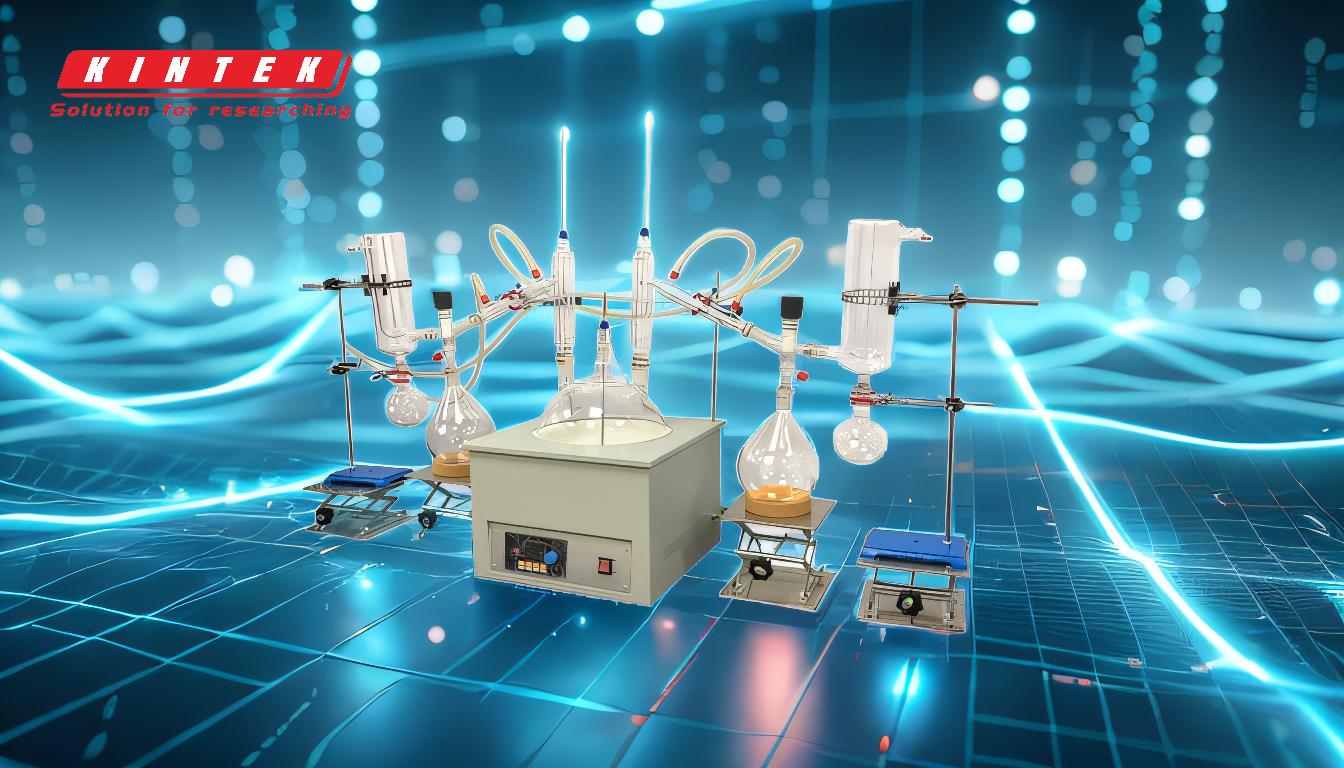Distillation can indeed be time-consuming, but the duration depends on several factors, including the type of distillation, the equipment used, and the specific parameters set during the process. For instance, molecular distillation is designed to minimize heating time and reduce energy consumption, making it faster and more efficient for heat-sensitive materials. On the other hand, traditional distillation methods may take longer due to the need for precise temperature and pressure control. Techniques like increasing RPMs, optimizing feed rates, and using advanced equipment such as rotary evaporators can significantly reduce distillation time. Below, we explore the key factors influencing distillation time and how to optimize the process.
Key Points Explained:

-
Types of Distillation and Their Time Requirements
- Traditional Distillation: This method often requires prolonged heating and cooling cycles, making it time-consuming. The process relies on maintaining precise temperatures and pressures, which can extend the overall duration.
- Molecular Distillation: Known for its efficiency, molecular distillation operates under high vacuum and low temperatures, significantly reducing heating time. It is particularly suitable for heat-sensitive materials, as it minimizes thermal damage and speeds up the separation process.
-
Factors Affecting Distillation Time
- Temperature Control: Higher bath temperatures can accelerate evaporation, but they must be balanced to avoid degrading heat-sensitive materials.
- Vacuum Levels: Operating under high vacuum reduces boiling points, enabling faster distillation at lower temperatures.
- Feed Rate: Maintaining a steady feed rate ensures consistent separation efficiency, preventing delays caused by uneven processing.
- Equipment Efficiency: Advanced equipment, such as rotary evaporators with higher RPMs, can significantly reduce processing time. For example, increasing rotation speed from 280-300 rpm to 315 rpm can save up to 25 minutes per day.
-
Techniques to Reduce Distillation Time
- Optimizing RPMs: Increasing the rotation speed of equipment like rotary evaporators can enhance solvent recovery and reduce overall processing time.
- Adjusting Condenser Temperature: Lowering the condenser temperature improves condensation efficiency, speeding up the separation process.
- Energy-Efficient Practices: Molecular distillation's low operating temperature and short heating time save energy and reduce processing duration.
-
Equipment Considerations for Time Efficiency
- Rotary Evaporators: These devices are highly effective for solvent recovery and can be optimized for speed by adjusting rotation rates.
- Molecular Distillation Units: Designed for high vacuum and low temperatures, these units are ideal for fast and efficient separation of heat-sensitive materials.
- Automated Systems: Modern distillation systems with automated controls can maintain optimal conditions, reducing manual intervention and saving time.
-
Balancing Speed and Quality
- While speeding up distillation is desirable, it is crucial to maintain product quality. Overheating or excessive RPMs can degrade materials, especially in heat-sensitive applications.
- Molecular distillation strikes a balance by offering fast processing times without compromising the integrity of the final product.
In conclusion, distillation time can vary widely depending on the method and equipment used. By leveraging advanced techniques like molecular distillation, optimizing equipment settings, and maintaining precise process controls, it is possible to significantly reduce distillation time while ensuring high-quality results. For purchasers of distillation equipment, prioritizing systems with features like high vacuum capabilities, adjustable RPMs, and automated controls can lead to more efficient and time-saving operations.
Summary Table:
| Factor | Impact on Distillation Time |
|---|---|
| Type of Distillation | - Traditional: Longer due to precise temperature/pressure control. |
| - Molecular: Faster, high vacuum, low temperature, ideal for heat-sensitive materials. | |
| Temperature Control | Higher temps speed up evaporation but must balance to avoid material degradation. |
| Vacuum Levels | High vacuum reduces boiling points, enabling faster distillation at lower temperatures. |
| Feed Rate | Steady feed rates ensure consistent separation efficiency, preventing delays. |
| Equipment Efficiency | Advanced tools like rotary evaporators (higher RPMs) and molecular distillation units save time. |
| Automation | Automated systems maintain optimal conditions, reducing manual intervention and time. |
Ready to optimize your distillation process? Contact us today for expert advice and equipment solutions!










